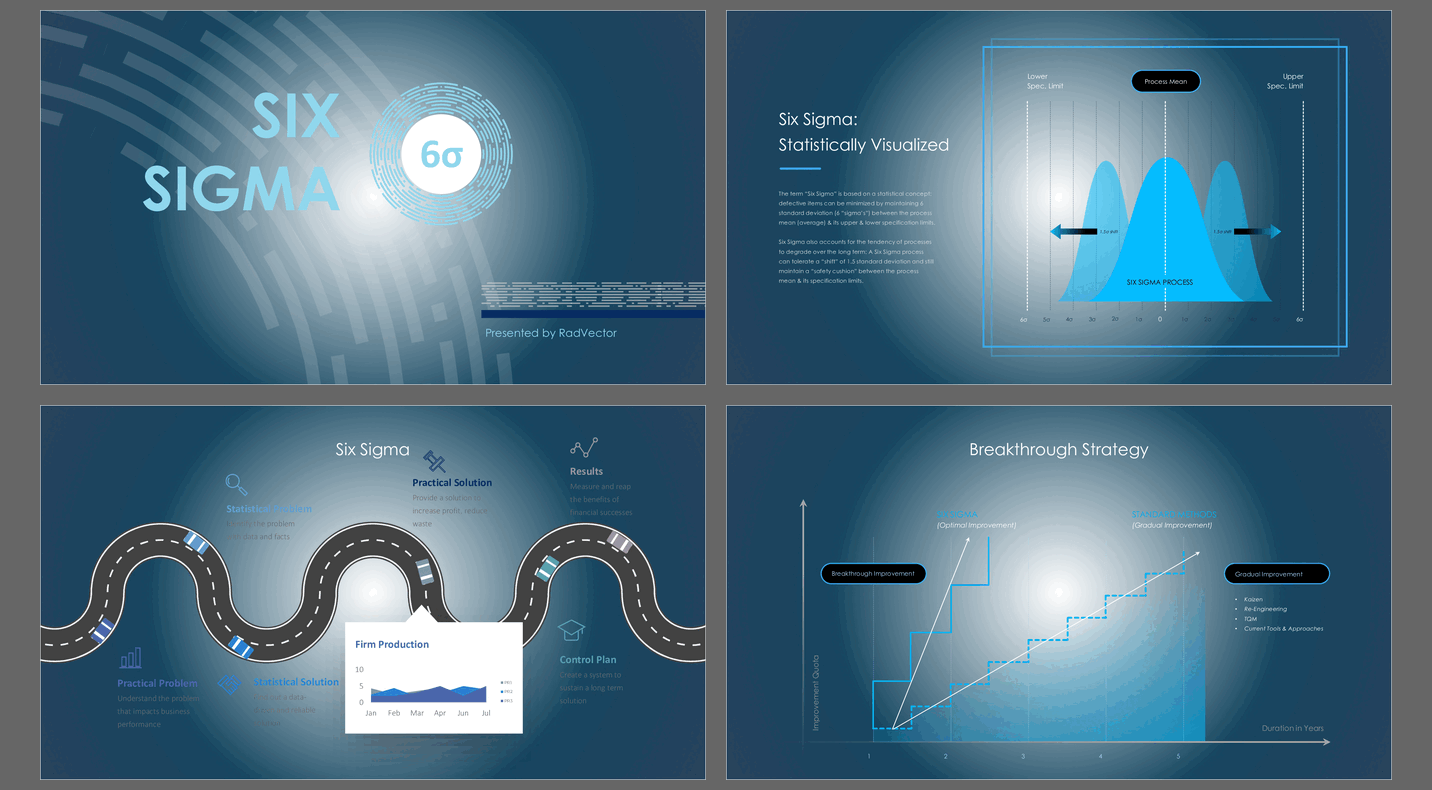Six Sigma (PowerPoint PPTX Slide Deck)
PowerPoint (PPTX) 31 Slides
SPECIALIZED POWERPOINT TEMPLATES PPT DESCRIPTION
Six Sigma is a data-driven methodology aimed at improving business processes by identifying and eliminating defects, reducing variability, and enhancing overall efficiency. Developed by Motorola in the 1980s and later popularized by General Electric, Six Sigma focuses on delivering high-quality products and services while minimizing waste and errors.
Principles of Six Sigma
Six Sigma is based on several key principles:
1. Focus on the Customer – Understanding customer requirements and striving to meet or exceed expectations.
2. Data-Driven Decision Making – Using statistical analysis to measure and improve processes.
3. Process Optimization – Identifying inefficiencies and reducing variation in processes.
4. Proactive Problem Solving – Preventing defects before they occur rather than fixing them after the fact.
5. Team Collaboration – Encouraging teamwork across different departments to drive continuous improvement.
The DMAIC Methodology
The most common approach in Six Sigma is DMAIC, which stands for:
• Define – Identify the problem, customer needs, and project goals.
• Measure – Collect data to understand the current performance of the process.
• Analyze – Identify the root causes of defects or inefficiencies.
• Improve – Develop and implement solutions to optimize the process.
• Control – Establish measures to sustain improvements over time.
Benefits of Six Sigma
Implementing Six Sigma offers several advantages:
• Improved Quality – Reduction of defects leads to higher-quality products and services.
• Cost Reduction – Minimizing waste and inefficiencies lowers operational costs.
• Increased Customer Satisfaction – Fewer errors result in better customer experiences.
• Enhanced Productivity – Streamlined processes improve efficiency and reduce cycle times.
• Stronger Competitive Advantage – Companies that adopt Six Sigma gain a reputation for quality and reliability.
Six Sigma Certifications
Professionals can earn Six Sigma certifications at different levels:
• White Belt – Basic understanding of Six Sigma principles.
• Yellow Belt – Contributes to projects and understands fundamental tools.
• Green Belt – Leads smaller projects and assists in data analysis.
• Black Belt – Leads major Six Sigma projects and mentors Green Belts.
• Master Black Belt – Expert in Six Sigma methodologies, guiding organizational strategy.
Conclusion
Six Sigma is a powerful methodology that drives process improvement and operational excellence. By focusing on reducing defects and variability, organizations can enhance efficiency, reduce costs, and improve customer satisfaction, making it a valuable tool in today's competitive business environment.
Got a question about the product? Email us at support@flevy.com or ask the author directly by using the "Ask the Author a Question" form. If you cannot view the preview above this document description, go here to view the large preview instead.
Source: Best Practices in Specialized PowerPoint Templates PowerPoint Slides: Six Sigma PowerPoint (PPTX) Presentation Slide Deck, RadVector Consulting









